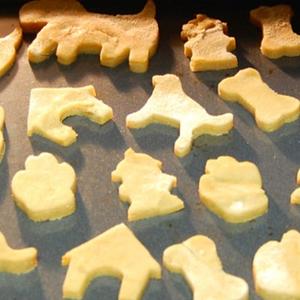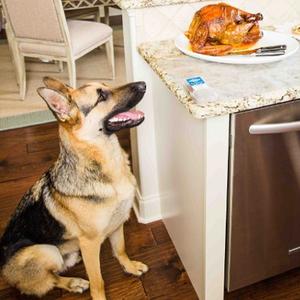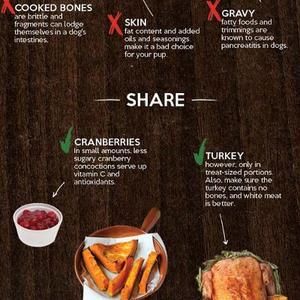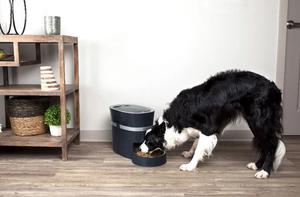 Wouldn't it be great to know which treats actually benefit your pet's overall health? Unfortunately, many commercially available pet treats contain ingredients that don't exist in nature and chemicals that can be harmful to internal organs or even cause cancer. If you were aware that you may be inadvertently feeding your pet treats that could have negative health consequences, wouldn't you switch to a safer option?
Wouldn't it be great to know which treats actually benefit your pet's overall health? Unfortunately, many commercially available pet treats contain ingredients that don't exist in nature and chemicals that can be harmful to internal organs or even cause cancer. If you were aware that you may be inadvertently feeding your pet treats that could have negative health consequences, wouldn't you switch to a safer option?
Considering the ongoing, fear-inducing health crisis with jerky pet treats manufactured in China, pet owners need to be more focused on providing minimally processed, non-toxic foods and snacks. Such options for your canine or feline companion don't necessarily have to be those that are commercially available in the pet food aisle at your grocery, drug, or pet store. The fresh fruits and vegetables you eat will likely provide a healthier snack for your pet than nearly any commercially available treat.
Many human foods can be fed to our canine companions and serve the multi-layered purpose of safely providing nutrition that is free from poor-quality ingredients and potential toxins found in most pet grade foods. Whole food treats can provide a punch of natural antioxidants, vitamins, and minerals. Your pet's body can't absorb the synthetic vitamins in most pet foods and treats as well as the natural vitamins found in fruits and vegetables. My top recommendation is to stick with fruits and vegetables. Meats, cheeses, and nuts are higher in protein and fat that, although not necessarily unhealthy, can still add calories or cause digestive upset.
Fruit: The Perfect Sweet Treat for Pets
Fresh or defrosted frozen fruits are the perfect moist, healthy snacks. Especially during the warmer months or for pets that live in balmy clients, there is a constant need for hydration to ensure all body systems function normally. Consuming water through moist foods is one of the best ways to keep the body optimally hydrated. Additionally, there's no need for additional water to be consumed to permit digestion unlike with dehydrated and heat-cooked treats like dog biscuits.
 Apple, banana, blueberry, cantaloupe, cherry, nectarine, peach, pear, raspberry, strawberry, and watermelon are my top choices. They're available in nearly every grocery store regardless of season.
Apple, banana, blueberry, cantaloupe, cherry, nectarine, peach, pear, raspberry, strawberry, and watermelon are my top choices. They're available in nearly every grocery store regardless of season.
Sweet fruits tend to be more appealing to pets than those that are bitter, like citrus. In my experience, few dogs like the tangy taste of an orange or grapefruit, and I've never seen a cat accept citrus as a snack.
Ripening enhances the sweetness and taste for pets as well as people. Outer skins on bananas or melons should be removed first. Thin-skinned options like berries should be crushed or chopped to reveal the tastier innards. Mashed or pureed fruit is simple to add to your dog's current food.
Not all fruits are appropriate snacks for dogs. Avoid currants, grapes, raisins, and their juices, which have an unknown toxic effect to some dogs' kidneys. Additionally, dried fruits are calorically dense, can contain preservatives like sulfur dioxide, and as we never know what will be "the next raisin," my general recommendation is to stick to fresh or defrosted frozen options.
Vegetables: Crunchy & Packed with Nutrients
 So many vegetables provide beneficial nutrients often deficient in commercially available pet foods.
So many vegetables provide beneficial nutrients often deficient in commercially available pet foods.
Veggies that grow above groun,d including cauliflower, cucumber, mushroom, spinach, and tomato, are high in moisture and low in calories. Vegetables growing underground, such as white and sweet potato, turnip, and carrots, contain less moisture and generally have more calories per serving. Both choices can benefit your dog's digestive function and overall state of health, but I suggest providing more of the above ground variety and less of those that grow underground as snacks except for carrots.
Ingredients that are members of the onion family, including shallots, onions, garlic, ad scallion, can cause damage to red blood cell membranes and anemia. Avoid any onion in fresh or powdered form.
Including Fruits & Vegetables to Your Pet's Diet
 If your pet resists eating a raw vegetable, then lightly steam and mash the vegetables for easy mixing into your pet's existing food. Cooked vegetables are easier to digest and less likely to cause gas. Remove eyes and green skin from potatoes before cooking them and serving them to your pet.
If your pet resists eating a raw vegetable, then lightly steam and mash the vegetables for easy mixing into your pet's existing food. Cooked vegetables are easier to digest and less likely to cause gas. Remove eyes and green skin from potatoes before cooking them and serving them to your pet.
What if your pet won't eat his veggies? Beef, chicken, or turkey broth can be added to vegetable mashes or purees to enhance flavor and encourage your pet to eat them. Pureed fruits and vegetables are also commercially available as baby foods, which are convenient and tasty, provided they lack onion powder, starch, and other additives.
Start with small quantities of fruit and vegetables, as food changes can cause digestive upset in some dogs. A few berries, an inch wide/long/thick slice of melon, or a teaspoon or tablespoon of mash or puree is an appropriate starting point depending on your pet's size. Note any changes in your pet's bowel movements, including larger volume, altered color or smell, or pattern variations. This could indicate the digestive tract's acceptance of fruits and vegetables. If your pet still has normal bowel movements despite having consumed small volumes of fruits or vegetables, then slowly and consistently increase the size of each portion. Larger pets can have larger servings.
The fiber found in fruits and vegetables can help fill your pet's stomach, so you can often reduce how much dry or canned food you feed your pet per meal. Weight loss or maintenance can occur without your pet experiencing the sensation of deprivation.
To minimize the potential your dog and human family members will be affected by food borne illness, the FDA offers helpful tips on produce safety, including purchasing, storage, and preparation. Thoroughly washing fruit and vegetables with soap and water can help remove environmental debris and infectious organisms. Sodium Hypochlorite (household bleach) solutions of 0.0314% or greater will kill surface-lurking bacteria.
The ASPCA Animal Poison Control Center (APCC) provides a great list of Foods That Are Hazardous for Dogs. Before feeding your pet a new fruit or vegetable snack besides those mentioned earlier, confirm each food item's safety by referencing the APCC's list.
I hope that your pet has many opportunities for safe snacking on fruits and vegetables.








